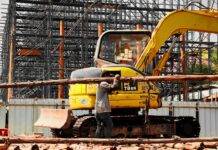
Safety Engineering in Construction: Managing Risks and Ensuring Compliance
Introduction
In the dynamic and high-risk environment of construction, safety engineering plays a pivotal role in safeguarding workers, preventing accidents, and ensuring compliance with stringent regulations. This article explores the key aspects of safety engineering in construction, focusing on risk management strategies, regulatory compliance, and the crucial role of safety professionals in maintaining a secure work environment.
Understanding Safety Engineering in Construction
Risk Management Strategies
Hazard Identification and Assessment
Safety engineering in construction begins with a thorough identification and assessment of potential hazards. This includes analyzing the site, materials, equipment, and processes involved in the construction project. Identifying potential risks is the first step towards effective risk management.
Developing and Implementing Safety Protocols
Based on hazard assessments, safety engineers develop and implement comprehensive safety protocols. These protocols encompass guidelines for personal protective equipment (PPE), machinery operation, emergency response procedures, and other critical aspects of construction site safety.
Regular Inspections and Audits
Continuous monitoring through regular inspections and audits is crucial. Safety engineers conduct thorough inspections to ensure that safety protocols are being followed, and any deviations or potential hazards are promptly addressed. These proactive measures help maintain a safe working environment.
Regulatory Compliance
Understanding and Adhering to Regulations
Construction sites are subject to a myriad of safety regulations imposed by local, state, and federal authorities. Safety engineers must have a comprehensive understanding of these regulations and ensure strict adherence to avoid legal consequences and, more importantly, to guarantee the well-being of workers.
Documentation and Reporting
Safety engineering involves meticulous documentation of safety measures taken and any incidents that occur. Accurate and detailed records help demonstrate compliance during regulatory inspections and investigations. Timely reporting of incidents is essential for identifying trends and implementing preventive measures.
Staying Updated with Regulatory Changes
The regulatory landscape is dynamic, with changes occurring periodically. Safety engineers must stay abreast of these changes and proactively adjust safety measures to ensure continuous compliance. This includes changes in safety standards, environmental regulations, and any other relevant guidelines.
The Crucial Role of Safety Professionals
Risk Mitigation and Emergency Response
Developing Emergency Response Plans
Safety professionals in construction play a key role in developing and implementing emergency response plans. These plans outline procedures for addressing accidents, natural disasters, or other unforeseen events. Effective emergency response is crucial for minimizing the impact of incidents.
Providing Training and Education
Safety engineers are responsible for providing comprehensive training to construction workers. This includes educating them on safety protocols, proper equipment usage, emergency response procedures, and the importance of maintaining a safety-conscious mindset. Well-informed workers are better equipped to mitigate risks.
Creating a Safety Culture
Fostering a Culture of Safety
Beyond regulatory compliance, safety professionals work towards fostering a culture of safety within the construction site. This involves instilling a mindset where safety is not just a set of rules but a shared responsibility. A strong safety culture contributes to the proactive identification and prevention of potential hazards.
Continuous Improvement Initiatives
Safety professionals lead continuous improvement initiatives by analyzing incidents, near misses, and safety performance metrics. Learning from past experiences helps in refining safety protocols, implementing new technologies, and ensuring that the construction site evolves towards an even safer environment.
Real-World Impact of Safety Engineering in Construction
Reduced Incidents and Injuries
One of the primary benefits of robust safety engineering in construction is a significant reduction in incidents and injuries. Implementing comprehensive safety measures and protocols minimizes the risk of accidents, creating a safer working environment.
Enhanced Productivity
A safe workplace is a productive workplace. Safety engineering measures contribute to reduced downtime due to accidents, creating an environment where workers can focus on their tasks without the fear of injuries, ultimately leading to increased productivity.
Legal Compliance and Reputation Management
Adherence to safety regulations ensures legal compliance, averting potential fines and legal consequences. Additionally, a construction company with a strong safety record enhances its reputation, attracting clients who prioritize safety in their projects.
Worker Morale and Retention
A commitment to safety positively impacts worker morale. Employees feel valued when their well-being is prioritized, leading to increased job satisfaction and higher retention rates. A stable workforce contributes to the efficiency and consistency of construction projects.
Cost Savings
While investing in safety engineering incurs initial costs, the long-term benefits outweigh them. Reduced incidents translate to lower medical expenses, workers’ compensation claims, and potential legal fees. Ultimately, safety measures contribute to significant cost savings.
Safety engineering in construction is essential for managing risks, ensuring compliance with regulations, and creating a secure work environment. Construction sites pose unique challenges and hazards, making safety a top priority. Here are key considerations and strategies for safety engineering in construction:- Risk Assessment:
- Conduct a thorough risk assessment before starting any construction project. Identify potential hazards, assess their severity, and determine the likelihood of occurrence.
- Prioritize risks based on their potential impact on workers, the public, and the project timeline.
- Regulatory Compliance:
- Stay abreast of and comply with local, state, and federal safety regulations and standards applicable to construction activities (e.g., OSHA regulations in the United States).
- Ensure that the construction site meets all necessary permits and approvals.
- Safety Planning and Documentation:
- Develop a comprehensive safety plan that outlines safety policies, procedures, and emergency response protocols.
- Document safety measures and communicate them to all stakeholders, including workers, subcontractors, and management.
- Training and Education:
- Provide regular safety training to all personnel on the construction site, covering topics such as hazard recognition, proper use of personal protective equipment (PPE), and emergency procedures.
- Ensure that workers are adequately trained for their specific tasks, including the operation of heavy machinery and equipment.
- Site Design for Safety:
- Design the construction site layout with safety in mind, ensuring clear access routes, proper signage, and separation of work areas to prevent accidents.
- Implement fall protection measures, guardrails, and safety nets in elevated work areas.
- Personal Protective Equipment (PPE):
- Mandate the use of appropriate PPE for all workers based on the specific hazards present on the construction site.
- Regularly inspect and maintain PPE to ensure its effectiveness.
- Emergency Response Planning:
- Develop and communicate emergency response plans, including procedures for evacuation, medical emergencies, and communication protocols.
- Conduct regular emergency drills to ensure that workers are familiar with and can respond effectively to different emergency scenarios.
- Safety Inspections and Audits:
- Conduct regular safety inspections of the construction site to identify and rectify potential hazards promptly.
- Perform periodic safety audits to assess the overall effectiveness of safety measures and adherence to protocols.
- Subcontractor Management:
- Ensure that subcontractors adhere to the same safety standards and protocols as the primary construction team.
- Establish clear expectations regarding safety performance and provide oversight to subcontractors.
- Communication and Reporting:
- Encourage open communication between workers, supervisors, and management regarding safety concerns and incidents.
- Implement a reporting system for near misses, accidents, and unsafe conditions to facilitate continuous improvement.
- Material Handling and Storage:
- Establish safe procedures for the handling, storage, and transportation of construction materials to prevent injuries and damage.
- Clearly label and store hazardous materials in accordance with regulatory requirements.
- Environmental Considerations:
- Address environmental concerns and comply with regulations related to waste disposal, erosion control, and other environmental impacts.
- Implement measures to minimize the impact of construction activities on the surrounding ecosystem.
- Continuous Improvement:
- Foster a culture of continuous improvement by regularly reviewing safety performance, analyzing incidents, and implementing corrective actions.
- Use feedback from workers to identify opportunities for enhancing safety measures.
- Technology Integration:
- Explore the use of technology, such as wearable devices, drones, and construction management software, to enhance safety monitoring, data collection, and communication.
- Legal and Ethical Considerations:
- Adhere to ethical standards in safety engineering, ensuring transparency, honesty, and fairness in reporting and managing safety issues.
- Stay informed about legal developments in safety regulations and adjust practices accordingly.
By incorporating these strategies into safety engineering practices in construction, organizations can effectively manage risks, protect workers, and ensure compliance with regulatory requirements, ultimately creating a safer and more secure construction environment.Conclusion
In conclusion, safety engineering in construction is not merely a regulatory requirement; it is a fundamental aspect of responsible and ethical construction management. By implementing effective risk management strategies, ensuring regulatory compliance, and prioritizing the role of safety professionals, construction sites can become safer, more productive, and reputable environments for all stakeholders involved.
Construction Hazards and Control Measures
Construction Safety at Workplace
FAQs
- What are the key risk management strategies in safety engineering for construction?
- Key risk management strategies include hazard identification and assessment, development and implementation of safety protocols, and regular inspections and audits to monitor safety measures.
- How do safety professionals contribute to emergency response in construction?
- Safety professionals contribute by developing emergency response plans, providing training to construction workers, and leading initiatives to ensure a quick and effective response to accidents or unforeseen events.
- Why is fostering a safety culture important in construction sites?
- Fostering a safety culture is crucial for instilling a mindset where safety is a shared responsibility. A strong safety culture promotes proactive hazard identification, prevention, and overall well-being of construction workers.
- What is the real-world impact of safety engineering in construction?
- The real-world impact includes reduced incidents and injuries, enhanced productivity, legal compliance and reputation management, improved worker morale and retention, and significant cost savings in the long run.
- How can safety engineers stay updated with regulatory changes in construction?
- Safety engineers can stay updated by regularly monitoring regulatory updates, participating in relevant training and workshops, and actively seeking information from authoritative sources to ensure continuous compliance.
























